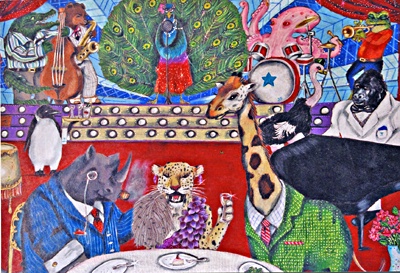All Nonfiction
- Bullying
- Books
- Academic
- Author Interviews
- Celebrity interviews
- College Articles
- College Essays
- Educator of the Year
- Heroes
- Interviews
- Memoir
- Personal Experience
- Sports
- Travel & Culture
All Opinions
- Bullying
- Current Events / Politics
- Discrimination
- Drugs / Alcohol / Smoking
- Entertainment / Celebrities
- Environment
- Love / Relationships
- Movies / Music / TV
- Pop Culture / Trends
- School / College
- Social Issues / Civics
- Spirituality / Religion
- Sports / Hobbies
All Hot Topics
- Bullying
- Community Service
- Environment
- Health
- Letters to the Editor
- Pride & Prejudice
- What Matters
- Back
Summer Guide
- Program Links
- Program Reviews
- Back
College Guide
- College Links
- College Reviews
- College Essays
- College Articles
- Back
Zoos Are Prisons, Not Sanctuaries
As a child, I would be filled with excitement and glee when my mother would tell me that we would be taking a trip to the zoo. During the car ride there, my mother and I would belt our silly zoo song, “Going to the Zoo” by Raffi. I have always had an intense fascination and love for animals. My house has practically been inhabited by every domesticated animal that is imaginable. When most people are young they have an innocence and trust in the world, believing that they are invincible and the world can do no wrong. As we grow older and more mature we hear news stories and discover the truths and horrors of the real world. When I began to expand my knowledge of animals and their different types of environments they lived in, I soon realized what poor conditions animals in zoos were held in.
Wild animals around the world are taken hostage and placed in animal exhibits, forced to perform tricks and provide entertainment for paying individuals. The exploitation of wild animals for human entertainment is inhumane and extremely disturbing because of what humans think is “good” for the animals. The topic of animal captivity needs to be evaluated for its ethicality and safety. Captivity is the state of being kept in a place, such as a prison or a cage, and not being able to leave or be free. If we would not subject ourselves to this action then why should animals be forced to experience something that we would not?
Animals that are forced into captivity often become aggressive due to extreme changes from their normal environments. Tatiana was a four-year-old Siberian tiger that escaped her enclosure at the San Francisco Zoo. Time magazine reported (Tatiana) “...killed Carlos Sousa Jr., 17, and mauled two other men, brothers Paul Dhaliwal, 19, and Kulbir Dhaliwal, 23, at the San Francisco Zoo on Christmas Day, has sparked a police investigation and much speculation as to who is to blame” (Time). This incident caused many speculations on what standards zoos are held to and how an incident like this could happen.
Animals are deprived of stimuli, proper nutrition, and space. This can cause animals to develop medical conditions and behavioral changes. “An Oxford University study based on four decades of observing animals in captivity and in the wild found that animals such as polar bears, lions, tigers, and cheetahs “show the most evidence of stress and/or psychological dysfunction in captivity” (PETA). There are many studies being conducted that are narrowing in on the exact variables that would harm or improve an animal's life in captivity.
Animals are supposed to have a free range of land to scavenge, hunt, and live on. Animals that are restrained into minute enclosure will have health and behavioral defects. Without their ideal habitat, the animal becomes irritated and possibly aggressive. Research from Oxford university shows that “The typical zoo enclosure for a polar bear is one-millionth the size of its home range in the wild, which can reach 31,000 square miles. Some captive polar bears spend 25 percent of their day in what scientists call stereotypic pacing, and infant mortality for captive animals is around 65 percent” (New York Times).
Zoos and aquariums are not safe for the animals and the workers. Some animals will attack each other because they are thrown into a new hierarchy of dominance. On the other hand, some groups state that captivity benefits many animals. They believe that these places can provide better nutrition and health care for the animals. While this may be true for animal rehabilitation centers or animal nature preserves, that release most animals back into the wild, public animal exhibits are more concerned about their profit than they are the health and well-being of their animals.
Animals should not be held in captivity due to the harmful effects it has on the animals. Not only the animals are negatively affected by captivity, but their handlers and trainers who experience the out lash of the animals emotions are affected as well. Housing animals in exhibits are costly and time-consuming meanwhile the animals are still not receiving their full experience of life, even though most zoos and aquariums claim they are providing a better life for their animals. We should not continue to confine animals to a paltry life because it negatively affects them and could cost us more than if we would leave them to their natural habitats.

